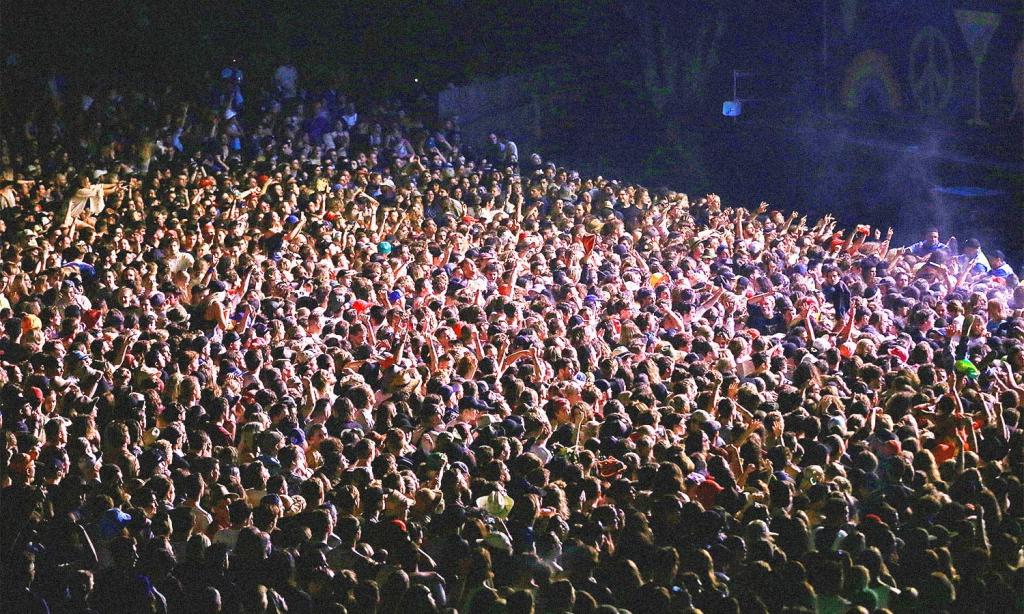Over the weekend, as many as 100,000 party-goers piled into the narrow streets of the Itaewon district in the South Korean capital of Seoul to celebrate Halloween. It was one of the city’s first major celebrations since the lifting of COVID restrictions but it ended in tragedy after more than 150 people were crushed to death in the crowds.
Disasters like these, while rare, can be terrifying. It doesn’t take much for a busy event to turn deadly and the panic that sets in during crowd crushes is what makes them fatal. The South Korean crush happened almost exactly one year after 10 people died in a crush during Travis Scotts’ performance at the Astroworld Festival in Texas.
The events are not a new phenomenon. Historians report crowd crushes as far back as the 18th century. When the density of people in a confined space reaches a certain level, crowd crushes become almost inevitable. Some of the most horrifying and famous include the 1964 crush at a football match in Lima, Peru, where more than 300 people died. In 1989, at a football stadium in Sheffield, UK, 94 people were crushed to death after 2,000 people were allowed to pour into crowded terraces with no way out.
That last one, the Hillsborough crush, had a significant impact on British culture and changed the way football stadium security was regulated. There is no doubt that the Itaewon crush will have a similarly lasting impact.
How Crowd Crushes Happen
Crowd crushes mainly happen at events where there are a lot of people and limited crowd control. Small spaces like hallways and alleys are prime territory, but they can happen in big crowds too once the density reaches a certain level. As this happens, humans begin to act more like a liquid, with a push from behind having a ripple effect through the crowd that can lead to crushing. This is what happened at Astroworld as the crowd surged towards the stage at the start of Scott’s performance.
One Twitter user has shared a detailed thread on how crowd crushes happen, noting that once the density in a crowd reaches four people per square metre, the chances of there being a crush significantly increase. Once you get six, it becomes very dangerous.
Watching for crowd density, and removing yourself from the situation when it becomes too dense, is key to avoiding being caught in a crush.
2) LEARN HOW TO WATCH CROWD DENSITY
This may be the most important step in the thread. Once crowd density reaches 6 people per square meter or more, it becomes very dangerous and you may not be able to get out anymore. Prevention is key. pic.twitter.com/SGIWaJkNsq
— ? (@belugasong) October 30, 2022
John Drury, an expert on the social psychology of crowd management at the University of Sussex, has told The Guardian that crowd crushes usually include three interlinked factors: overcrowding, waves of movement in an already extremely dense crowd, and crowd collapse. When there is an obstruction, the effects are exacerbated.
Crowd crushes can happen as people are kept upright in a crowd through pressure on each other. If someone falls, the pressure will push others into that now-vacant space, with more being dragged in to relieve pressure coming from the edges. This is when you get trampling and people falling onto each other in piles.
How to Protect Yourself in a Crowd Crush
People typically don’t realise how dense a crowd is, or how dangerous a dense crowd can become, as visibility drops to just those around you. This is why people may continue to push from behind or be unaware of others in the crowd.
First of all, you want to avoid tripping over. Removing backpacks, while it might seem like a good idea to give others space, can cause tripping hazards and more people to fall. Trying not to fall, and helping up others who have fallen, is paramount.
During a crowd crush, people tend to get injured and die when they are squashed to such an extent that their lungs can no longer inflate. What you need to do in this situation is lock your arms around your chest, giving protection to your ribcage and lungs.
What is also advised is the need to stay calm. Shouting and screaming will only heighten panic and the more panicked people in a small space, the worse it can get.
This being said, crowd safety expert Professor Alsion Hutton, has said that “there is not much someone can do if they find themselves stuck deep in a dense mosh pit which is out of control.”
Crowd Crushes Can Happen Anywhere
Crowd crushes are always entirely the fault of the organisers and those involved in planning the event. Because Australia has good safety management regulations in place to stop these kinds of events, we may not think of them as a problem for us. The reality is, though, that they have happened here before and can happen again.
The last person killed in a crowd crush incident in Australia was 16-year-old Jessica Michalik who died during Limp Bizkit’s set at Big Day Out in 2001. The incident changed crowd management in Australia forever and the guitarist, Wes Borland, quit the band in the aftermath.
However, in 2016, 80 people were injured in a crowd crush at Falls Festival as they tried to leave a tent after the DMA’s. The festival was forced to re-think its crowd management strategy and eventually paid out $7 million to those who were affected.
No, THIS is exactly what’s supposed to be happening in a mosh pit https://t.co/fZQH0QiFuR pic.twitter.com/kWQdVBiShp
— linkeeen berrr (@bombalurina03) November 6, 2021
Related: Why We Need Glastonbury Music Festival Now More Than Ever
Related: Here’s How Much Aussies Spend on the Melbourne Cup
Read more stories from The Latch and subscribe to our email newsletter.







